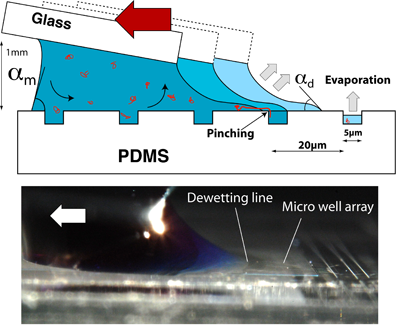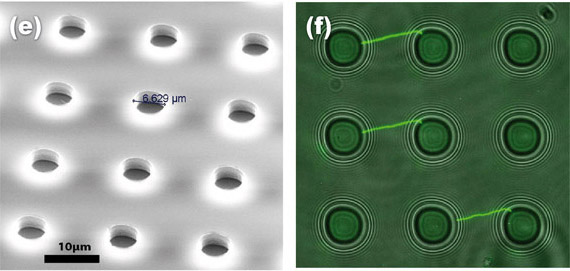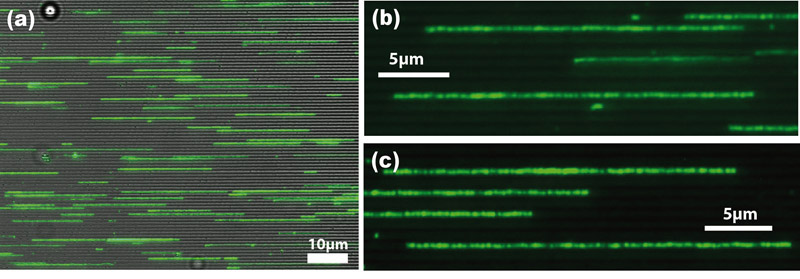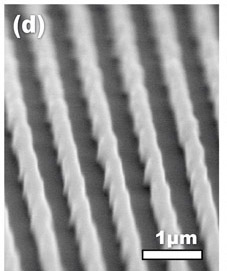Combing DNA strands on microstructured PDMS
Draining of a droplet of DNA on a microstructured PDMS substrate allows the deposition and elongation of DNA molecules. The process involves the dewetting of the liquid over a set of micro wells that create a perturbation of the dewetting line. Singles DNA strands are then pinched and elongated when the the liquid breaks in the vicinity of microholes.

Schematic of the deposition process

SEM of microructures PDMS substrate and GFP fluorescence imaging of ordered Lambda phage DNA molecule on a PDMS substrate
Related Publication
B.Charlot, F.Bardin, N.Sanchez, P.Roux, S.Teixeira and E.Schwob, "Elongated unique DNA strand deposition on microstructured substrate by receding meniscus assembly and capillary force", Biomicrofluidics 8, 014103 (2014). DOI 10.1007/s00542-012-1696-5
DNA on rails : combing DNA strand on nanogratings
The previous combing techniques relies on a physical phenomenon that arise during dewetting of a DNA solution on a substrate with microholes. Another technique allows to comb DNA strands on a substrate by using a DNA terminaison / substrate intercation. A low pH, the endings of the molecules opens and let the base interact with a fonctionalised substrate allowing an effective anchoring of the molecule ending on the substrate. By adding a nano topography, i.e a set of parallel grooves, it is possible to deposit DNA strand with a perfectly linear configuration along the substrate. The figure below shows examples of such elongated DNA on nanorails.

GFP fluorescence imaging of Lambda phage DNA strands combed on a nanograting
